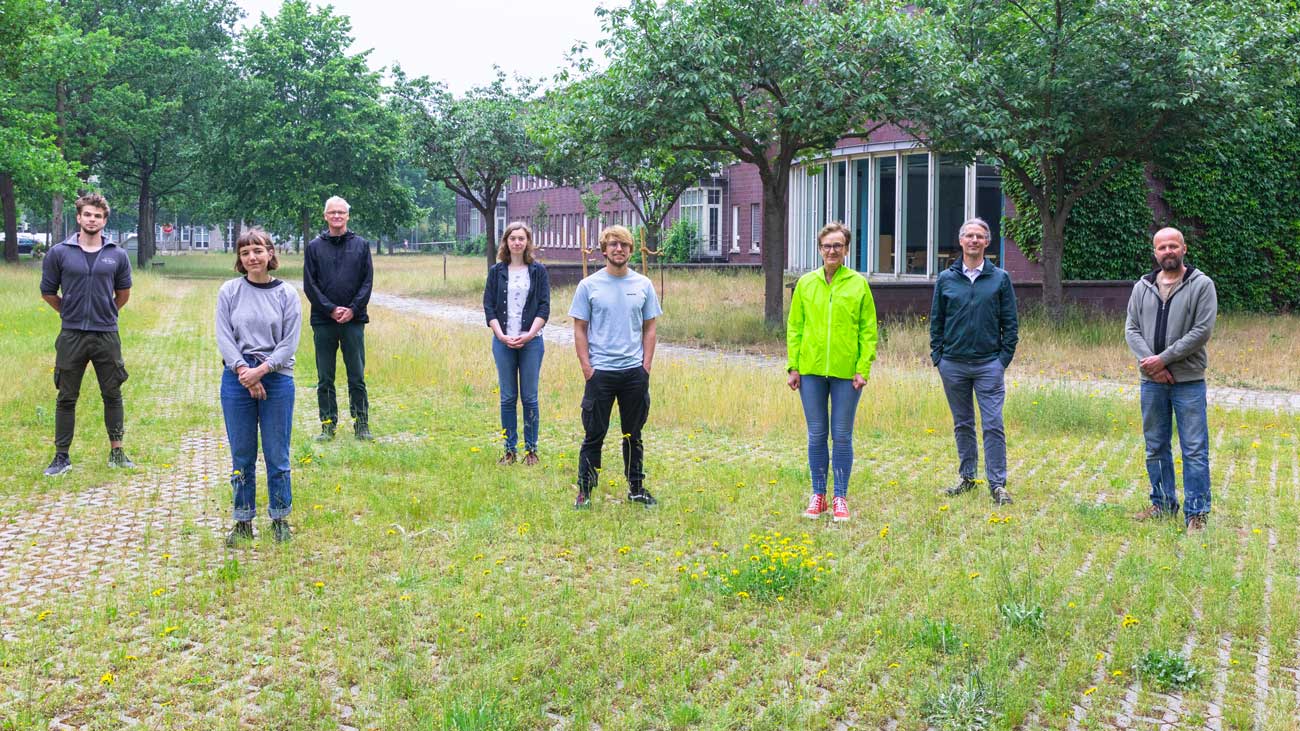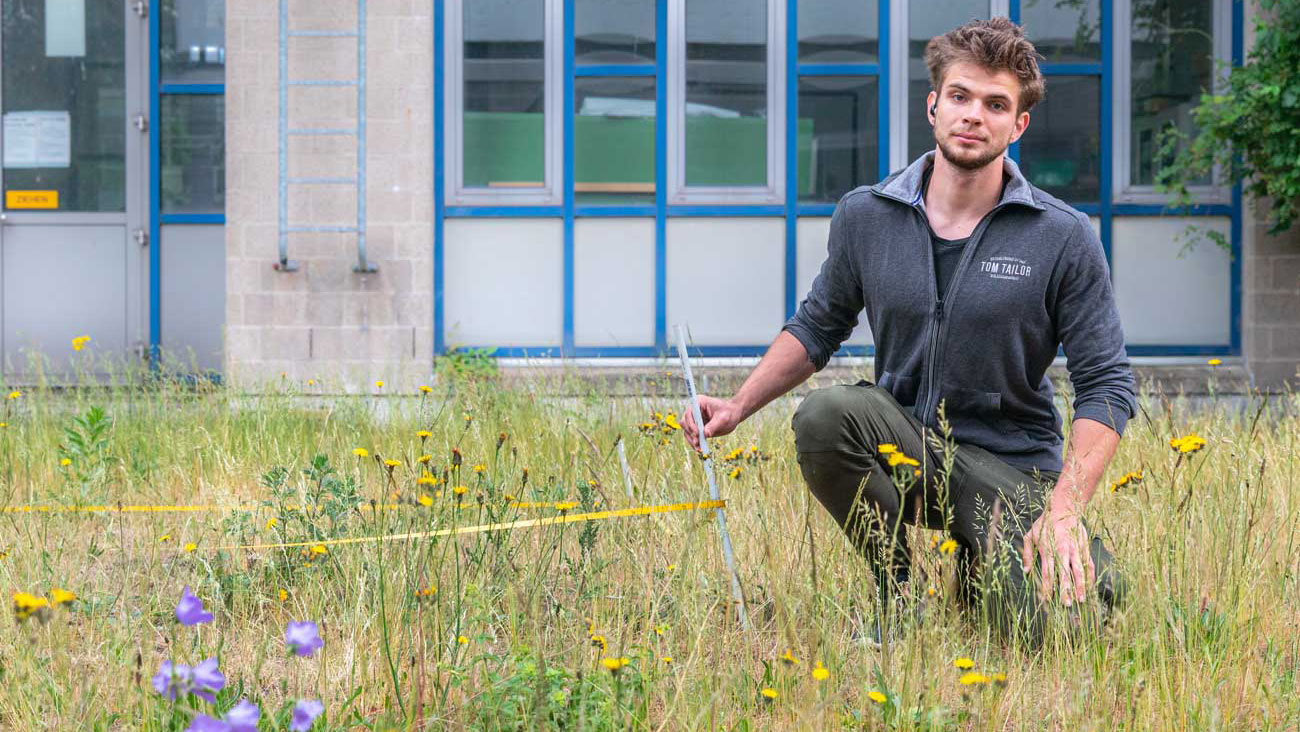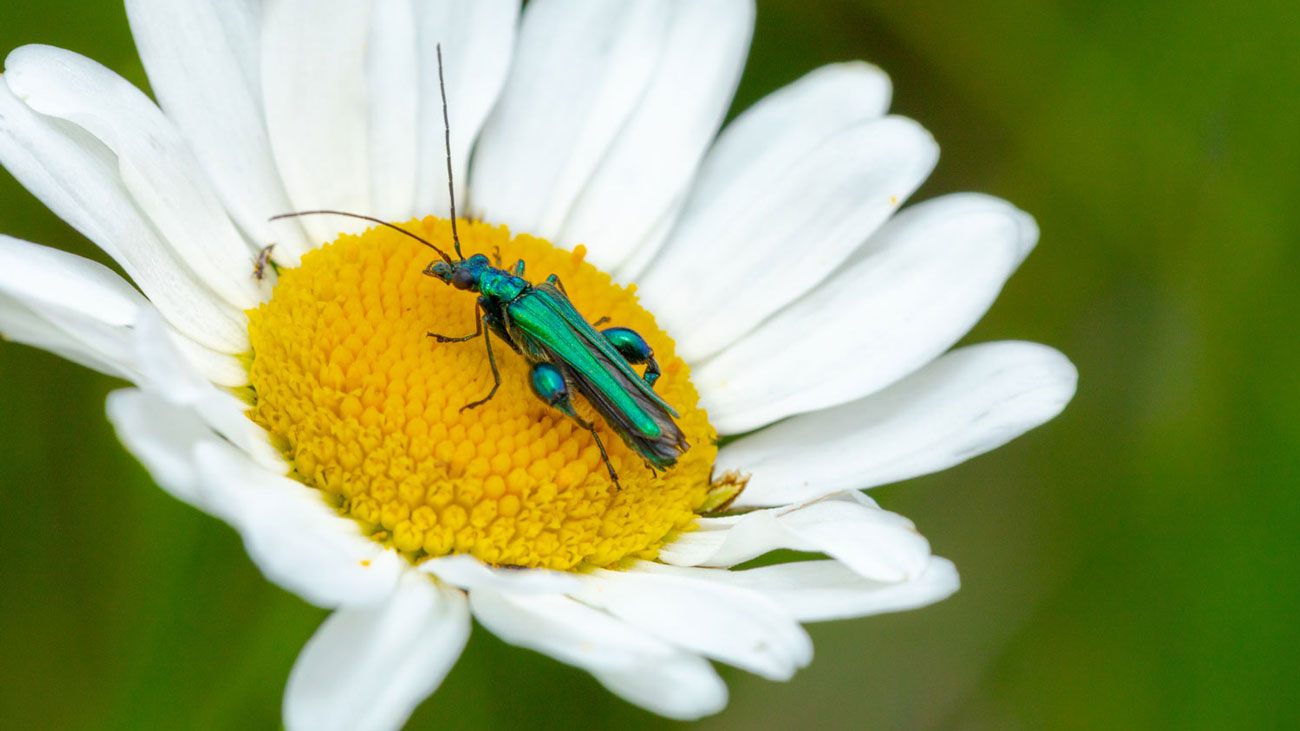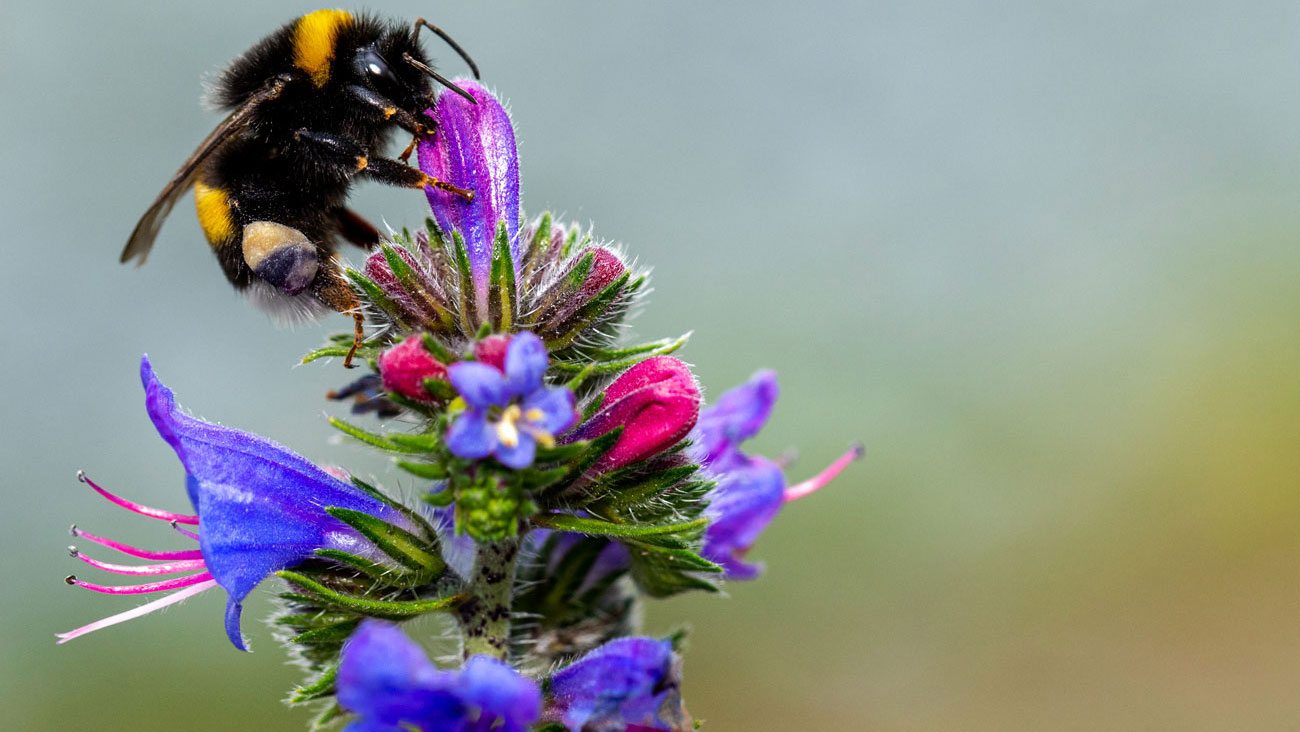
© Matej Meza
The Way Dedicated People at the University Create Habitats for Plants And Insects
Campus Goes Biodiverse or: Why has no one mowed the lawn?
What’s going on here? Why hasn’t the lawn behind the State and University Library been mowed? Why are grasses and yellow flowers knee-high? Well, didn’t the university’s Administrative Department 4 for Technical Administration do their job, when everything else is impeccably clipped? Maybe they’ve just missed the area? No. Actually, it is part of a deal. We wouldn’t be at the university, if this didn’t have a scientific purpose! Campus Goes Biodiverse is the name of the project. And a group of students and their professors together with the environmental officer of the university explain it really well.
The members of the Nature Conservation Group of the University of Bremen, NUB for short, are committed to an alternative management of green areas. During a visit on site, the students Hannah Callenius, Antonia Otte, and Moritz Rocho are explaining what is important to them. Bringing nature into the city – that is a pilot project of the University of Bremen. “The intensification of agriculture leads to a decline in the biodiversity of flora and fauna through fertilization, lowering of groundwater levels, and the use of pesticides,” says Hannah Callenius, who is doing a bachelor’s degree in biology. Now, countermeasures are being introduced to urban areas to create a balance – such as on campus. “Less mowing yields more,” she says.

© Matej Meza

© Matej Meza

© Matej Meza
Determining plants with the utmost precision
Martin Diekmann, professor of biology, is supervising a scientific project on biodiversity. “We are pleased that we have so many supporters at the university,” he says. His student Jannis Gercken, who studies biology and history to become a teacher, has already started marking an area of the meadow behind the storage tower. Here, he is now going to determine each plant with the utmost precision. “I’m just going to see what’s growing here,” says the 22 year-old casually. It doesn’t look that impressive at first glance. But – a closer look reveals a clearer picture: The soft grasses are called red fescue, for example. “Festuca rubra,” murmurs the student expert. Then it goes one after the other: cat‘s ear, bellflower, hawkweed, St. John’s wort, mallow, oxeye daisy, viper’s bugloss, garden vetch, yarrow, and cranesbill – far more than expected.
Walking along with the landing net
The scientists and their students are now interested to see what happens if the areas are left alone, which means they are not mowed. Or whether it makes sense to sow more species in the nutrient-poor lawn. This will be an exciting experiment. Also exciting for Professor Marko Rohlfs. The zoologist is specialized in insects and explains the life cycle and how one thing depends on the other. “We are in a phase of insect extinction,” he says in a serious voice. The biomass in its diversity is the food of the insects, which in turn are the food source of the birds. Sixty percent of the birds feed on the crawling and winged animals. “Large insectivores like the European Roller have already become extinct,” he says. Professor Rohlfs and his students are also curious to find out what will happen to the unmown meadow. “We will take a landing net and see what kind of spiders, butterflies, wasps, and wild bees are buzzing around here.”
Ten areas established
Thorsten Kluß from the working group cognitive neuroinformatics, who wants to understand the death of bees, is also on board. Due to the development of large areas of land behind the Cartesium, his bees are facing great challenges. “They have to go somewhere else to search for food; that uses up a lot of their energy,” he says. So, these meadows are all the more welcome. Everyone involved in the project is convinced: It must be promoted. Ten areas have so far been established by those involved with the support of Doris Sövegjarto-Wigbers, the university’s environmental officer. Ten areas that are now very rarely being mowed. In order to explain to passers-by what is going on here, signs will be put up in the future. “We want to heighten people’s awareness of biodiversity on campus,” says Professor Diekmann.
Further information:
Blog of the Conservation Group of the University of Bremen - in German!